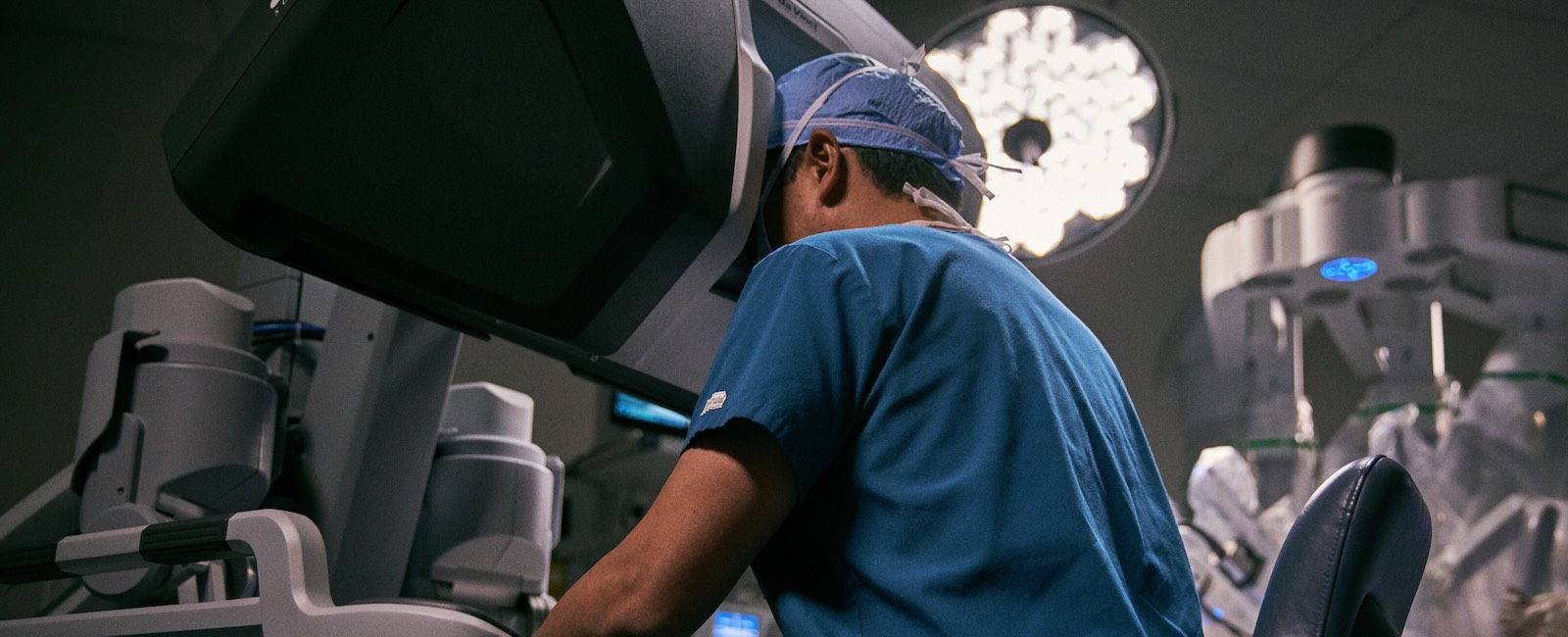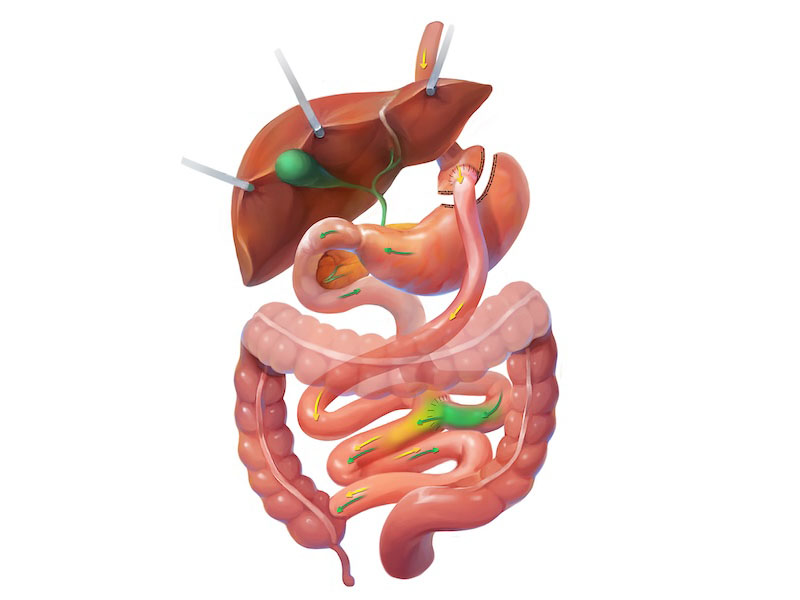
Gastric Bypass
How Gastric Bypass Works
The Roux-en-Y gastric bypass is performed by creating a small stomach pouch at the upper portion of the stomach, which drastically reduces the amount of food a patient can eat at one time. The rest of the stomach is left in place, but no longer receives food.
We then reroute a section of the small intestine and attach it directly to this new pouch. The bypassed portion of the intestine is reconnected farther down, forming the characteristic “Y” shape that gives the procedure its name. This restructuring not only limits the size of meals but also reduces calorie and nutrient absorption, while hormonal changes help decrease hunger and improve metabolism.

What To Know About Gastric Bypass
The entire gastric bypass procedure typically takes between 1 and 1.5 hours. Most patients are discharged home within a day or two, once they can walk, breathe normally, and drink adequately. Return to work varies between one week and one month, depending on the physical requirements.
Patients can expect to lose about 60% to 75% of their excess weight within the first year after surgery.* They can also expect resolution or improvement of medical conditions such as hypertension and diabetes, often within the first few weeks or months after surgery.
Gastric Bypass Advantages
- Longest track record of all bariatric procedures
- Excellent control of diabetes
- Greatest control of heartburn, reflux, or GERD
- Most often included in bariatric benefits by all insurance companies
- The risk of dumping syndrome helps patients avoid sugar and fat intake
Risks of the Gastric Bypass
Risks specific to the gastric bypass include rare potential leaks at the staple lines and new connections created during the procedure. A leak could mean an extra few days in the hospital, additional antibiotics, or another laparoscopic procedure. Long-term risks include an ulcer at the connection between the pouch and the intestine, as well as bowel obstructions and internal hernias.
One attribute specific to the bypass is dumping syndrome, which can be viewed as both a positive and a negative. Patients who eat too much fat or sugar during a meal may “dump” or experience symptoms of nausea, sweating, fatigue, weakness, and diarrhea. It is your body’s way of telling you that you ate the wrong thing.
A few more vitamins are required after surgery compared to a sleeve gastrectomy because of the smaller pouch and the bypassing of some of the small intestine.
Disadvantages Summary
- Risk of ulcer disease, particularly in tobacco users
- More operative complications than other bariatric procedures
- A portion of the digestive tract is bypassed, reducing the absorption of some nutrients
- Unpleasant dumping syndrome may occur with fat or sugar intake
Gastric Bypass Risks
- Extremely low mortality rate
- Inherent surgical risks
- Nausea and vomiting
- Rare leaks from the staple line
- Small bowel obstruction
- Possible nutritional deficiencies
Gastric Bypass Recovery Timeline
- Hospital stay is typically 24 to 48 hours
- Many patients return to normal activity within 1 to 2 weeks
- Heavy lifting is restricted for roughly 4 weeks
*Results will vary between patients

